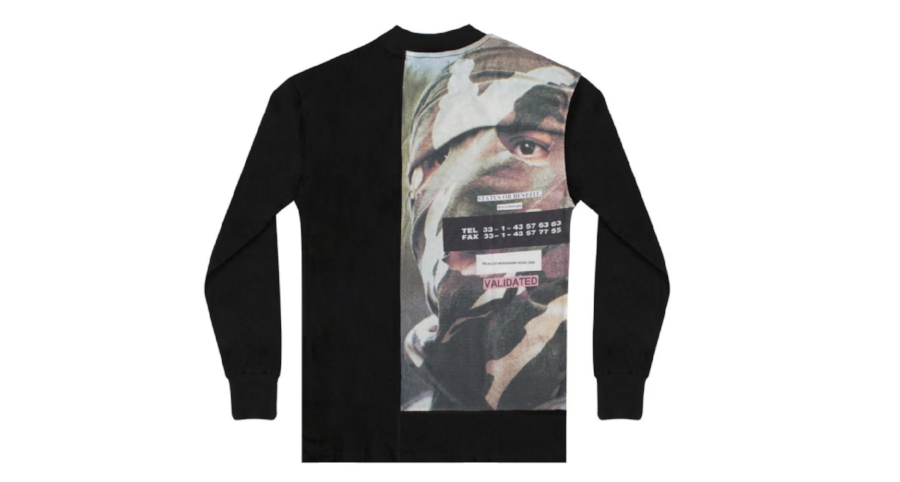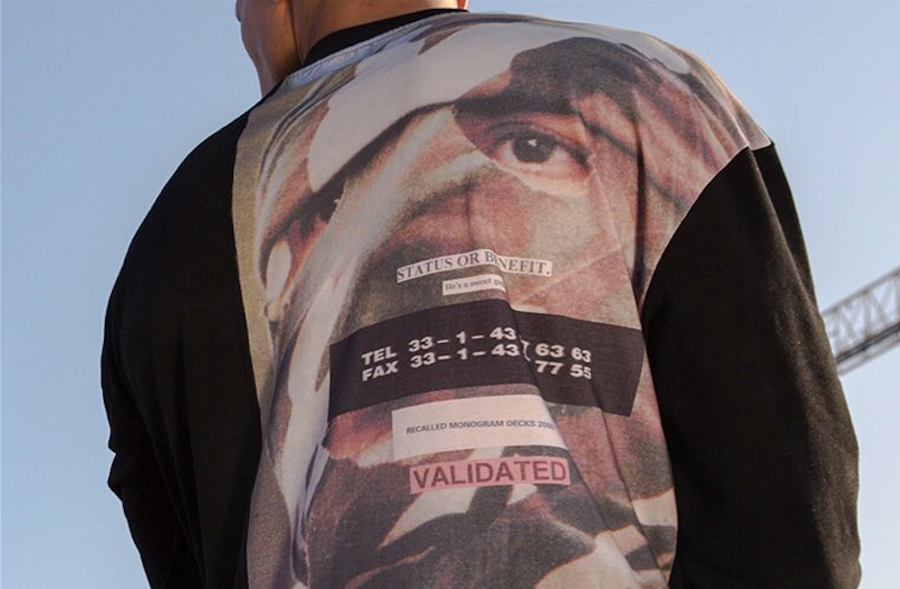 image: Wil Fry
image: Wil Fry
Wil Fry, the designer behind those Ian Connor wares, Givenchy t-shirt on-a-t-shirts, and ad campaign-covered bomber jackets, has taken – yet again – to commenting on the current state of the industry, his favorite topic of parody. Enter: The “ss17” long-sleeve t-shirt, which Australian-born, New York-based Fry dropped on Wednesday on his website.
Just as a major overhaul of the way fashion is dispensed and shown (particularly in New York) is underway, so, too, appears to be the slow upheaval of many of fashion’s archaic powers – and systems – that be. As WWD noted recently, many big-name creatives, such as Riccardo Tisci, Alber Elbaz, Hedi Slimane, Stefano Pilati, Peter Copping, Francisco Costa, Rodolfo Paglialunga, Frida Giannini and Marco Zanini, are currently on the side lines, likely because they have potentially demanded huge salaries, lavish perks and too much creative control from potential employers in light of the sped-up timelines and demands that are being routinely placed on creatives by the overly-corporatized fashion business.
Moreover, the internet, the advent of the all-powerful iPhone, and the rise of social media has given access and voices to many people that those in the upper echelon of the fashion industry would likely otherwise never have heard – whether it be in the form of individuals permeating fashion’s hard shell (and joining the ranks) or of a new group of consumers that simply value different things than those in the generations prior.
The results have presented themselves in a slow, often resisted manner thanks to the overly exclusive nature of fashion industry, as upheld by the iron-clad establishment of conglomerates and their web of friends. Nonetheless, diversity is on the rise on the runway, at the helm, and on the masthead. Younger names and the so-called “disruptive brands” – Gosha Rubchinskiy, Demna Gvasalia and his Vetements cohorts, etc. come to mind – are increasingly steering the conversation (even if that is, at times, still very much in line with the workings of fashion’s already-established powers. Remember Demna’s all-white casting for early Balenciaga, Vetements?).
And still yet, worlds that formerly would not have touched in a collaborative way are partnering to reach new consumers, who seem to care much less right now about design or quality and more about racking up cool points among their Instagram followers or gaining the temporary “validation” (as it says on Fry’s shirt) that comes with owning/wearing garments from brands co-signed by the Kanye Wests (and as indicated below, the Virgil Ablohs) of the world.

The Old Way vs. The New Order
Given the timing of Fry’s new tee – it comes just after the release of the Louis Vuitton x Supreme collaboration, and the debut of Raf Simons’ Spring/Summer 2018 menswear collection – and the references that appear on the tee, itself, such as nods to rivalries of sorts between Simons and Abloh, and Louis Vuitton and Supreme, it is clear that Fry’s attention is on the clashing of the old guard and the new wave.
Consider Fry’s inclusion of Simons’ old studio phone and fax numbers on the shirt, which Simons shared in a video associated with his Spring/Summer 1998 “Black Palms” collection (an “old vs. new” thing, Fry told TFL).
Up next: Part of that oh-so-damning excerpt from the interview between GQ and Simons early this year, in which Simons slammed Abloh’s brand Off-White. If you recall, Simons’ answer to the question of what younger brands inspire him right now was: “Not Off-White” – followed by, but … “He’s a sweet guy,” speaking of Abloh.
Most obviously, this statement is tied to the marked similarities between Off-White garments/themes and ones that Simons had already shown, oftentimes, years before. Less transparently, however, is the possibility that Simons is cognizant of the fact that a new generation of design talent – which like it or not, includes Abloh – is coming for his title of being best at capturing and translating youth codes.
Abloh told W magazine a few months later, “His critique shows the line in the sand.” He elaborated, stating: “I don’t come from where I’m supposed to come from. So I have to prove that this is design, that this is art, that this is valid.”
Interestingly, one could certainly argue that Simons’ current surge in popularity is precisely due to influential figures, such as Abloh, who, for instance, has not only worn/been photographed in Simons’ designs but has praised his work in countless interviews.
Also in the mix of the “ss17” shirt: Text that reads, “Recalled monogram decks 2000,” a reference to the fall out that followed the strongly-worded cease and desist letter (a legal correspondence sent to an alleged wrongdoer describing the alleged misconduct and demanding that the alleged misconduct be stopped) that Louis Vuitton’s Intellectual Property Enforcement team sent to Supreme in 2000, taking issue with Louis Vuitton monogram-bearing skate decks that the New York-based skatewear/streetwear brand was offering at the time.
That letter proved a popular touchpoint for the menswear sites of the world as of late, in connection with the almost 20-year-later announcement of the Louis Vuitton x Supreme collab.
The point of Fry including these references on the garment? To show how everything in this industry “has come full circle.”







